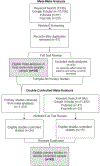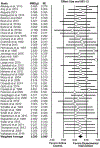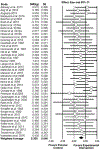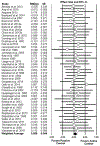Quantifying the Difference between Active and Passive Control Groups in Cognitive Interventions Using two Meta-Analytical Approaches
- PMID: 34337311
- PMCID: PMC8320766
- DOI: 10.1007/s41465-020-00164-6
Quantifying the Difference between Active and Passive Control Groups in Cognitive Interventions Using two Meta-Analytical Approaches
Abstract
Despite promising reports of broad cognitive benefit in studies of cognitive training, it has been argued that the reliance of many studies on no-intervention control groups (passive controls) make these reports difficult to interpret because placebo effects cannot be ruled out. Although researchers have recently been trying to incorporate more active controls, in which participants engage in an alternate intervention, previous work has been contentious as to whether this actually yields meaningfully different results. To better understand the influence of passive and active control groups on cognitive interventions, we conducted two meta-analyses to estimate their relative effect sizes. While the first one broadly surveyed the literature by compiling data from 34 meta-analyses, the second one synthesized data from 42 empirical studies that simultaneously employed both types of controls. Both analyses showed no meaningful performance difference between passive and active controls, suggesting that current active control placebo paradigms might not be appropriately designed to reliably capture these non-specific effects or that these effects are minimal in this literature.
Keywords: Cognitive Training; Experimental Confounds; Hawthorne Effects; Meta-Analysis; Placebo Effects.
Figures








